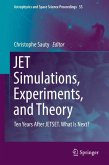This book begins by reviewing quasars, microquasars, and gamma-ray bursts and shows why black holes are responsible for them. It describes simple, isolated black holes, adding rotation, accretion, radiation and magnetic fields, to show how these objects work.
As a result of significant research over the past 20 years, black holes are now linked to some of the most spectacular and exciting phenomena in the Universe, ranging in size from those that have the same mass as stars to the super-massive objects that lie at the heart of most galaxies, including our own Milky Way. This book first introduces the properties of simple isolated holes, then adds in complications like rotation, accretion, radiation, and magnetic fields, finally arriving at a basic understanding of how these immense engines work.
Black Hole Astrophysics
- reviews our current knowledge of cosmic black holes and how they generate the most powerful observed pheonomena in the Universe;
- highlights the latest, most up-to-date theories and discoveries in this very active area of astrophysical research;
- demonstrates why we believe that black holes are responsible for important phenomena such as quasars, microquasars and gammaray bursts;
- explains to the reader the nature of the violent and spectacular outfl ows (winds and jets) generated by black hole accretion.
As a result of significant research over the past 20 years, black holes are now linked to some of the most spectacular and exciting phenomena in the Universe, ranging in size from those that have the same mass as stars to the super-massive objects that lie at the heart of most galaxies, including our own Milky Way. This book first introduces the properties of simple isolated holes, then adds in complications like rotation, accretion, radiation, and magnetic fields, finally arriving at a basic understanding of how these immense engines work.
Black Hole Astrophysics
- reviews our current knowledge of cosmic black holes and how they generate the most powerful observed pheonomena in the Universe;
- highlights the latest, most up-to-date theories and discoveries in this very active area of astrophysical research;
- demonstrates why we believe that black holes are responsible for important phenomena such as quasars, microquasars and gammaray bursts;
- explains to the reader the nature of the violent and spectacular outfl ows (winds and jets) generated by black hole accretion.
From the reviews: "This gigantic and outstanding book summarizes the state of the art of black hole physics. ... The mathematical presentation is didactically excellent. ... The chapters about the exhaust systems are a further highlight of the book. The different mechanisms are clearly explained and judged ... . The book can be sincerely recommended for all astrophysical tutorials and to all students engaged in astrophysics." (Johannes Viktor Feitzinger, Zentralblatt MATH, Vol. 1259, 2013)








